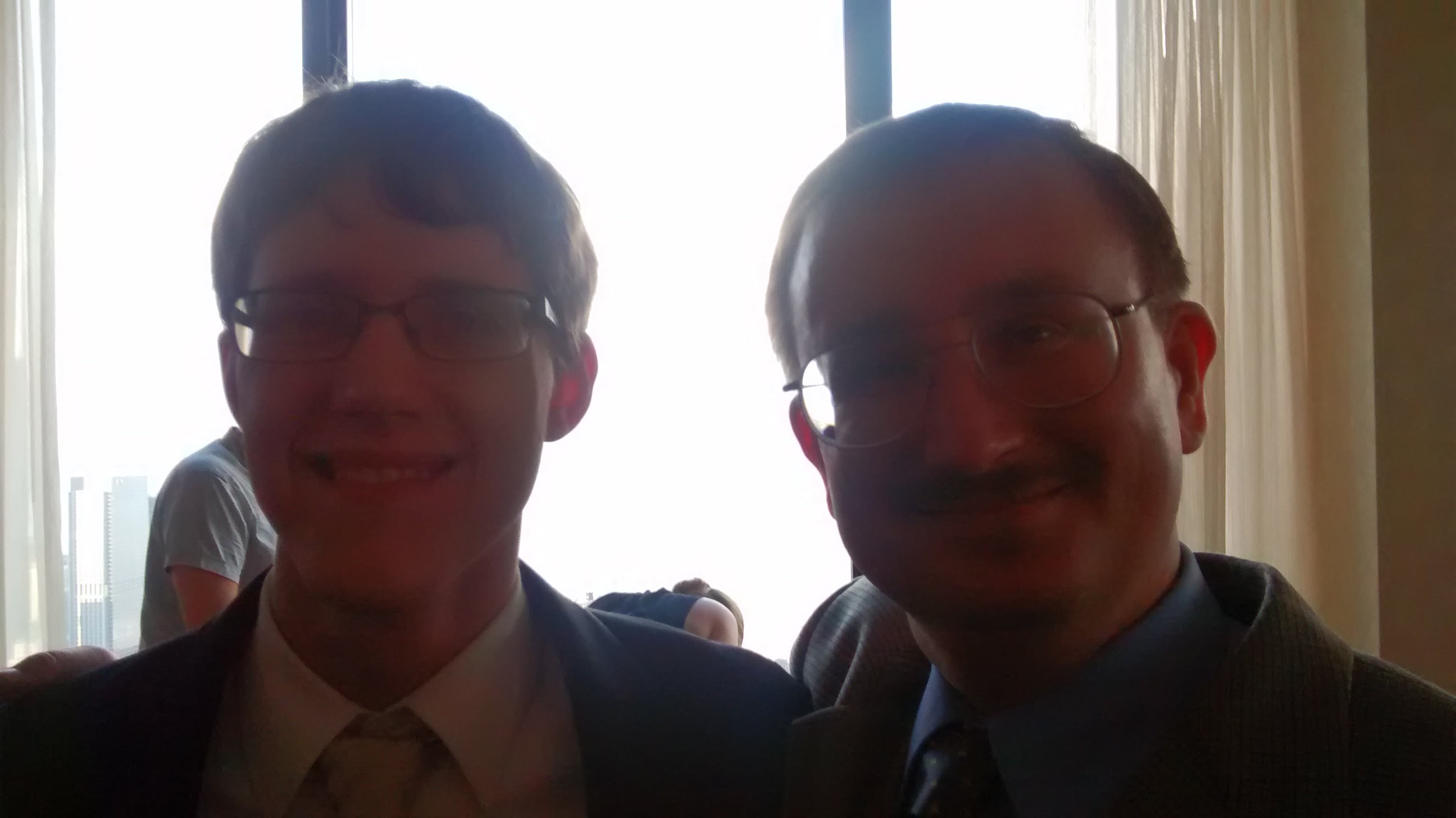Student/Faculty Collaboration Leads to New Discovery
For Brett Haines, sitting in a math classroom at Eastern Illinois University wasn’t quite enough – a certain itching curiosity remained. Thankfully he found a faculty mentor more than willing to help scratch that itch in the person of Bogdan Petrenko, and their research turned into a special discovery. 
“I first had Dr. Petrenko for an Abstract Algebra class and I absolutely loved it,” remembers Haines, who graduated in Fall 2015 with a dual degree in Mathematics/Computer Science and Applied Mathematics. “Both him as a teacher and the subject itself. So I asked if we could do an independent study together. I really wanted to work with him more and get a better understanding of the math in general.”
Petrenko says over the course of a couple semesters, he and Haines would meet two or three times a week and just study math.
“What’s really rewarding is that I didn’t have to chase (Haines) down,” remembers Petrenko. “All this was unsolicited.
“It’s a pleasure, though. It’s good for my mental health. Imagine if what I teach is only interesting (to students) just from the point of view of earning credit, then deep down I would think that what I’m doing is worthless or not of much value.” 
Their work became doubly rewarding when Haines discovered something wholly new to the math community. He ended up presenting this research – titled Coefficients of Cyclotomic Polynomials – at Northern Illinois University in March 2015 during the annual meeting of the Illinois section of the Mathematical Association of America.
“Dr. Petrenko and I kind of stumbled upon the results,” says Haines. “I wrote a computer program to check hundreds of thousands of numbers for a certain property and, when graphed, a very clear pattern emerged where the graph looked similar at multiple levels, which we did not expect.
“I'm not sure I could give a layman's explanation beyond that. I don't think I considered it very special at first, but I'm sure Dr. Petrenko would say differently!”
Indeed he was!
“In typical coursework, there aren’t many real discoveries,” explained Petrenko. “Everything is expected because the teacher knows about it and everything has been planned. Working with something and finding something that wasn’t known before gives (students) the sense that they can make their own discoveries and encourages them to do that.
“For an employer, this is invaluable. If you have a company that creates new things, you want someone who already had the experience of finding something new and enjoying it. The desire will be there. We want to create students with the skills necessary for that.”
Haines is living proof: Upon graduation, he went to work as a junior software engineer at Wolfram Research.
“I now work for the company that wrote the software we used in our research,” said Haines. “The research isn't directly related (to what Wolfram does), but I think that any extra-curricular research is something that expands the way one thinks and helps out later on.”
Both Petrenko and Haines agree a university environment in which students can feel welcome and comfortable approaching instructors about outside-the-classroom work is a huge deal.
“It’s comforting to students and parents to know there are such opportunities,” said Petrenko, who adds that fellow math faculty members have also embraced recent opportunities to do research work with their students. “Expensive liberal arts colleges boast this all the time. If we don’t, it creates a false impression that if you pay twice as much in tuition – only then will your child be cared for.
Adds Haines: “Especially for something as detail intensive as math, being able to work directly with a professor gives students a chance to really dig into the subject that just can't be achieved in a classroom. Not only were we able to look at a subject that I was personally interested in, we dived much deeper into it than we could have with a larger group.
“This was valuable to me because I can say I learned something that not only no other students learned, but I was a major part in making that learning experience happen. That shift from passively learning to actively discovering makes the experience very special.”

